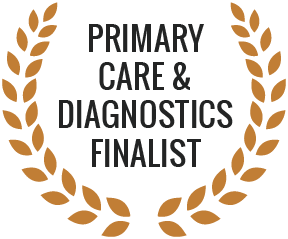When not caused by an underlying condition, most rashes result from irritation of the skin caused by environmental or food allergens, cosmetics, detergents, latex, or pollen. The rash appears when the body responds to the allergen by releasing histamine, which opens the blood vessels & releases fluid into the tissues, causing redness, swelling, & itchiness.
A doctor can help you to underst& the cause of your rash & advise you of the best possible treatment options.
Rashes are usually not serious but can be very uncomfortable, & in some cases, they are an indication of a more serious condition, such as cellulitis, viral infection such as herpes, or severe dermatitis.
Some fungal infections, sexually transmitted infections (STDs) & bacterial infections can also cause a rash. In very rare cases, serious diseases such as cancer, liver disease & kidney disease can cause a rash.
Other common causes of a rash include:
- Acne
- Eczema (atopic dermatitis)
- Psoriasis
- Seborrheic dermatitis
- Weather conditions (dry, cold, damp, heat)
- Emotional stress
Itchiness is the most common symptom of a rash. You may also notice redness on the skin, changes in skin texture, & raised areas or bumps. If the rash is caused by an allergen, severe symptoms to look out for include difficulty breathing, facial swelling, or fever, all of which are signs that you should see a doctor as quickly as possible.
Definition
A rash is an area of skin that is red, often with raised spots, & usually accompanied by itchiness. Rashes can take many forms & have different causes. They may be localised (concentrated in one area), or spread out over a larger area. Other terms for a rash include urticaria, hives, wheals, & welts.
Symptoms
Rashes can be caused by a variety of different conditions. Some of the most common skin conditions featuring rash in their symptoms include:
- Contact dermatitis: a weeping, oozing rash, usually a reaction to an environmental irritant or allergen
- Seborrheic dermatitis: the rash is red, scaly, & itchy, usually affecting the scalp, face, & ears
- Eczema (atopic eczema or atopic dermatitis): in which the skin is red, scaly, itchy, & inflamed, & may thicken & form blisters
- Psoriasis: the rash is itchy, red & raised, appearing in patches which are often silvery or scaly; psoriasis can also cause joint pain & inflammation
- Milaria or heat rash: characterised by clusters of tiny red spots or blisters, often appearing on the neck, chest, & groin
- Granuloma annulare: the rash is circular, with small, firm reddish bumps, usually on the forearms, hands & feet
- Lichen planus: the rash includes shiny, scaly, flat bumps which may be purplish-red; if it appears on the scalp it can cause hair loss
- Pityriasis rosea: itchy spots on a background of scale, pink skin
- Ringworm: the rash is silvery, scaly, & has a characteristic round ring-shape
- Scabies: the scabies rash is contagious, intensely itchy, & accompanied by many tiny red spots
- Hives: this type of rash usually comes on very quickly, with raised, red, itchy patches that can spread over quite large areas of the body
Other symptoms of a rash will depend on the nature & cause of the rash. The most common of these symptoms include:
- Dry or flaking skin
- Scaly patches on the skin
- Crusty areas of skin
- Roughness, leatheriness, or other changes in skin texture
- Blisters (raised bumps full of clear fluid)
- Raised bumps (with a flat or round surface)






















